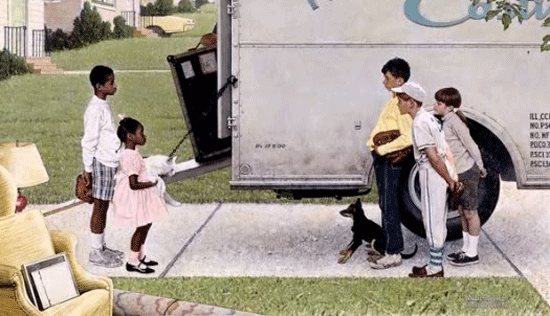 |
intersect
Your Name in the Bible
INTERSECT (Where the Bible Meets Life) is a regular column of ONE Magazine featuring Dr. Garnett Reid, a member of the Bible faculty at Free Will Baptist Bible College. Email Garnett greid@fwbbc.edu |
Our son Hugh was two years old when my wife Carol ordered a personalized Christmas storybook for him. It was just a standard Santa tale, but with Hugh’s name, favorite toy, pet’s name—those kinds of details that made it his own story—inserted into the narrative.
I’m Talking to You!
Hugh’s personal Christmas storybook reminds me of a great way to help the Bible come alive as we read it: make it personal. Read it as your story. I don’t mean take it out of context or violate what the biblical author was saying in his own time and place. Nor am I forgetting that we interpret and apply Scripture within the community of believers.
But I am convinced that too often we read the Bible as outsiders looking in, with a “that was then, this is now” mindset. Or, as Calvin Miller suggests, I think of other people who could really use this passage I’m reading! When my eyes fall on God’s Word, it is a word to me, about me, for me. The Holy Spirit would likely tell us, “Hey! I’m talking to you!”
God Spoke to Us
After all, even the human writers of Scripture made it a practice to apply earlier passages to themselves. When the prophet Hosea read the story of Jacob’s dream at Bethel in Genesis 28, he knew that God intended it as a lesson for him and his generation in Israel over a millennium after it happened. Jacob met God there, Hosea notes, and “there God spoke to us” (Hosea 12:4). Though a few English translations miss the sense, the Hebrew text clearly says, “with us” or “to us,” not “with him.” Hosea is reading Genesis with an eye toward what it is saying to himself and to his generation.
The same is true in Acts 13:47, where Paul takes Isaiah 49:6 as a commandment to his outreach team to evangelize the world. He quotes the Isaiah passage and affirms that it is the Lord’s command “to us.”
Peter’s Daughter, Jephthah’s Daughter
Seldom have I seen a more moving example of personally applying the biblical truth than what I witnessed in Russia several years ago. I was teaching the first class at the Chelyabinsk affiliate of the Moscow Bible Institute. When it came time to give the class their final exam in Old Testament Survey, I decided to administer the test in a style common to Russian education. Each student would sit before me and respond to questions orally.
Since I had gotten to know these men and their backgrounds quite well, one question I posed to them was this: “What Old Testament character would you most like your son or daughter (depending on the student’s family) to be like and why?”
Peter Alyanov, a church planter from Magnitogorsk, stunned me with his answer. “I would like my daughter to be like Jephthah’s daughter (in Judges 11),” he declared. “I pray that she would trust the Lord and her father so completely that she would give her life without hesitation if that’s what He asked of her.” Talk about personal application!

You Are in the Painting
Seeing ourselves in the Bible reminds me of an incident Carol and I experienced in 2008. We were visiting the Norman Rockwell Museum near Stockbridge, Massachusetts. Our guide was leading us through rooms graced with the artist’s paintings. All those elegant, realistic depictions of Rockwell’s Americana brought quick smiles and hushed sighs of delight from our group. Yet I thought our guide seemed dry and rote, not quite into his spiel—until, that is, we entered the final room of the exhibit.
Suddenly he seemed energized, and his tone lightened as he pointed to a single painting: Rockwell’s painting "Moving In" (pictured above) which depicted the first desegregated neighborhood in a Chicago suburb in the 1960s. In the picture were three white children awkwardly meeting their new neighbors, an African-American boy and girl, beside a moving van in their driveway. “That little black boy in the painting is me!” our guide exclaimed, still with a proud grin some 40 years later.
He was in the picture, and that made all the difference. Paint yourself into the Bible’s scenes, and it will make a difference for you.
|

